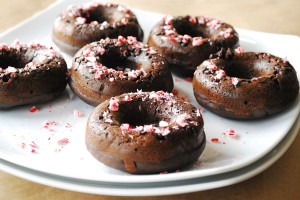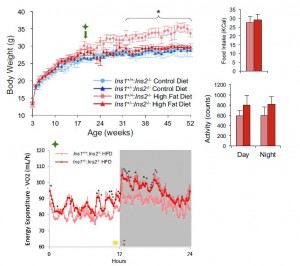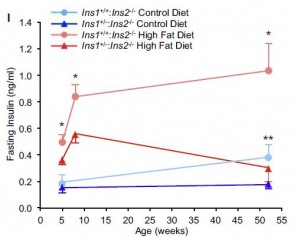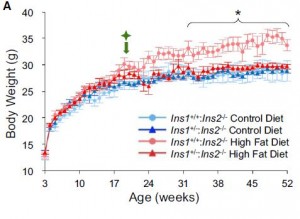As stated in the Laws of Energy Balance, you can get fat without eating more, and unfortunately there are about a thousand different ways to do so. Here is yet another:
Long-term, intermittent, insulin-induced hypoglycemia produces marked obesity without hyperphagia or insulin resistance: a model for weight gain with intensive insulin therapy (McNay et al., 2012)
While it has a lot in common with fat gain diet-induced insulinemia and diabetic insulin therapy, this isn’t the greatest “model for weight gain with intensive insulin therapy.” But it’s an interesting one nonetheless.
In this model, normal rats are fed the standard fare, but once weekly get jabbed with 10 U/kg insulin; enough to drop glucose to ~35 mg/dL (seriously hypoglycemic). Yes, this is an insulin spike, but not like the ones we normally see – usually, carbs cause the insulin spike but also provide the glucose necessary to prevent hypoglycemia. These rats weren’t so lucky.









